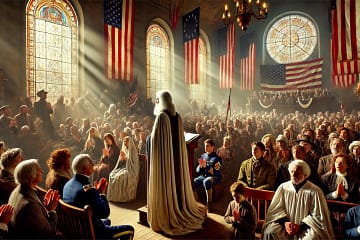“Room 13” by Edgar Wallace, published in 1924, is a classic mystery and detective novel by the prolific British author. Known for his numerous crime stories, Wallace weaves a gripping tale of intrigue, deception, and complex characters in this work. The story revolves around Johnny Gray, a man recently released from prison, and his entanglements with past associates and new challenges as he seeks redemption and justice.
Comprehensive Plot Summary
Johnny Gray, freshly released from Dartmoor Prison, steps out into a world that seems both familiar and foreign. The grim stone archway of the prison, marked with the ironic words “Parcere Subjectis,” is a stark reminder of his recent past. Harnessed to a handcart, he and his fellow inmate Lal Morgon, a wizened lifer with a penchant for gallows humor, trudged up the steep slope daily. But today, Johnny walks out alone, the weight of the outside world pressing down on him.
As he adjusts to his newfound freedom, Johnny receives a letter from Peter Kane, the man who had become a father figure to him. The letter brings devastating news: Marney, Peter’s beloved daughter and the woman Johnny loves, is marrying Major Floyd from Toronto. The news hits Johnny like a sledgehammer, not because he begrudges Marney happiness, but because he knows something about Major Floyd that Peter does not. The Major is none other than Jeff Legge, a notorious forger and the man responsible for Johnny’s unjust imprisonment.
Johnny’s thoughts drift back to his time in prison and the convoluted events that led him there. He had been framed in a racecourse swindle, orchestrated by Jeff Legge. Accepting his sentence without appeal, Johnny had spent his time behind bars reflecting on the betrayal and plotting his next moves. Peter Kane, despite his criminal past, had tried to steer Johnny away from trouble, always emphasizing the importance of Marney’s future. Now, with Marney’s impending marriage to a man who had wronged him, Johnny feels a renewed sense of purpose.
Determined to protect Marney and expose Jeff, Johnny begins to unravel the complex web of deceit. He learns that Jeff, under the guise of Major Floyd, has ingratiated himself with Peter, presenting himself as a respectable and honorable man. Marney, unaware of Jeff’s true identity, is caught in the middle of a dangerous game. Johnny knows that revealing Jeff’s deceit could shatter Marney and Peter’s world, but he also understands that the truth must come out.
Johnny’s investigation leads him to confrontations with old associates and new enemies. He reconnects with Peter, who is overjoyed to see him but unaware of the storm brewing around them. Peter’s devotion to Marney is evident in everything he does, and Johnny is torn between his loyalty to Peter and his need to protect Marney from the impending danger. As Johnny delves deeper, he uncovers more about Jeff’s plans to exploit Marney and extort Peter, using their familial ties as leverage.
The tension escalates when Johnny confronts Jeff directly. Their encounter is charged with unspoken threats and veiled accusations. Jeff, maintaining his facade as Major Floyd, taunts Johnny, confident in his belief that Johnny can do nothing to stop him. Johnny, however, is not deterred. He knows that his strength lies in his resolve and his ability to outthink his adversaries.
Amidst the unfolding drama, Johnny is reminded of the importance of allies. He forms an uneasy alliance with Lila, a maid who has been spying for Jeff but is now disillusioned with her role. Together, they gather evidence of Jeff’s deceit and plan to expose him. Johnny’s interactions with Lila are marked by a blend of suspicion and mutual respect, as both navigate the treacherous landscape of betrayal and revenge.
The climax of the narrative comes when Johnny presents Peter with irrefutable proof of Jeff’s true identity. Peter is devastated but resolute. His love for Marney drives him to take decisive action. The final showdown between Peter, Johnny, and Jeff is intense, filled with raw emotion and high stakes. In a dramatic confrontation, Peter confronts Jeff, his fury tempered by his need to protect his daughter. Jeff, realizing his game is up, tries to flee but is ultimately captured.
In the aftermath, Johnny and Peter reflect on the events that have transpired. Marney, though heartbroken, finds solace in the knowledge that she has been spared from a disastrous marriage. Peter’s gratitude towards Johnny is profound, and their bond is stronger than ever. Johnny, having navigated the complexities of love, loyalty, and justice, emerges as a figure of resilience and integrity.
The tale concludes with Johnny looking towards the future with a renewed sense of hope. He has faced his demons and emerged victorious, not just in exposing Jeff but in reaffirming his commitment to those he loves. The journey has been fraught with peril, but it has also been a testament to the enduring power of truth and the unbreakable bonds of family.
Main Characters
- Johnny Gray: The protagonist, recently released from prison, he is intelligent, introspective, and driven by a sense of justice. His complex past and relationships fuel the narrative’s tension and his quest for redemption.
- Peter Kane: A father figure to Johnny and deeply devoted to his daughter Marney. His past as a criminal mastermind contrasts with his current life, creating a character of depth and moral ambiguity.
- Marney Kane: The daughter of Peter Kane and the love interest of Johnny. She is unwittingly caught in the schemes of Jeff Legge, embodying innocence and victimhood within the story.
- Jeff Legge: The antagonist, posing as Major Floyd. His cunning and deceit drive the conflict, making him a formidable foe for Johnny.
- Emanuel Legge: Jeff’s father and a manipulative figure, his past and present actions significantly impact the unfolding events.
Themes and Motifs
- Redemption and Justice: Central to Johnny’s character arc, the theme explores his journey from a wrongly convicted man to a seeker of justice, both for himself and for those he cares about.
- Deception and Betrayal: These motifs run throughout the story, from Jeff’s impersonation of Major Floyd to the intricate lies spun by various characters, highlighting the precarious nature of trust.
- Loyalty and Family: Explored through the relationships between Johnny, Peter, and Marney, this theme underscores the emotional and moral complexities of their bonds and the lengths they go to protect one another.
Writing Style and Tone
Edgar Wallace’s writing style in “Room 13” is characterized by its brisk pace and clear, direct prose. His narrative technique seamlessly blends dialogue and description, creating a vivid and engaging story. Wallace’s tone is suspenseful and charged with a sense of impending danger, maintaining reader interest through twists and revelations. The language is accessible yet rich in detail, reflecting the era’s societal norms and the intricacies of the criminal underworld.
Wallace’s ability to create atmosphere and tension is evident throughout the novel. His characters are well-developed, their motivations and conflicts driving the plot forward with a relentless energy. The use of irony and foreshadowing enhances the story’s depth, making “Room 13” a compelling read that balances action with introspection.
Overall, “Room 13” is a testament to Edgar Wallace’s mastery of the mystery and detective genre, offering readers a thrilling journey through a world of crime, love, and redemption.


